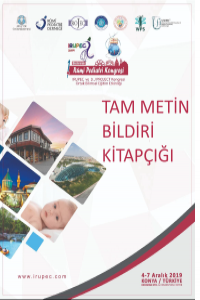Abstract
Respiratory diseases in newborns are common clinical problems, especially in preterm infants. Formerly, the only method to evaluate the adequacy of ventilation and oxygenation was by assessment of arterial blood gas (ABG) in these patients. ABG, which is a painful and time consuming procedure, provides intermittent, not continuous data, that limits its use in documenting transient events. Therefore, noninvasive systems such as pulse oximetry to determine oxygenation, and transcutaneous carbon dioxide (PtcCO2) monitoring and end-tidal CO2 (EtCO2) measurement to evaluate the CO2 status of critically ill neonates have become increasingly popular. The EtCO2 monitoring has some clear advantages over the transcutaneous CO2 monitoring, such as a much faster response time to changes in blood CO2 levels, internal calibrating ability and no thermal injury to the fragile skin of the newborn.
EtCO2 measurement is based on the principle that CO2 will be detected during expiration from a correctly placed endotracheal tube (ETT). EtCO2 can be detected by capnography, capnometry or colorimetric devices. The presence of EtCO2 was detected significantly quicker by a capnograph than the time to reach the EtCO2 level when a colour change would be first observed using a colorimetric device. Besides, contamination of colorimetric device with gastric fluid, surfactant or medications such as atropine and epinephrine can lead to false-positive results. Capnography is done by either side stream or main stream gas sampling; low flow capnography with side stream (Microstream) technology is the preferred system in NICU. A diagram of a normal capnogram is seen in Fig. 1. Most neonatal studies have shown a good correlation between EtCO2 and PaCO2 (r=0.8), even in preterm infants. This correlation falls with significant respiratory failure. In conjunction with ABG analysis, capnography can provide valuable information about ventilation/perfusion (V/Q) disturbances of the lung.
Normal Capnogram (Fig. 1)
Phase I (inspiratory baseline) reflects inspired gas, which is normally devoid of carbon dioxide
Phase II (expiratory upstroke) a rapid rise in CO2 concentration as anatomical dead space is replaced with alveolar gas
Phase III is the alveolar plateau. PCO2 of the last alveolar gas sampled at the airway opening is called the EtCO2
Phase 0 is the inspiratory downstroke, the beginning of the next inspiration
Keywords
References
- References: 1- Aminiahidashti H et al. Applications of End-Tidal Carbon Dioxide (ETCO2) Monitoring in Emergency Department; a Narrative Review. Emerg (Tehran). 2018; 6(1): e5. 2- Selby ST An Update on End-Tidal CO2 Monitoring. Pediatr Emerg Care. 2018 Dec;34(12):888-892. 3- Scrivens A et al. Is waveform capnography reliable in neonates? Arch Dis Child. 2019 Jul;104(7):711-715. 4- Lin HJ et al. End-tidal carbon dioxide measurement in preterm infants with low birth weight. PLoS One. 2017 Oct 17;12(10):e0186408.
Abstract
References
- References: 1- Aminiahidashti H et al. Applications of End-Tidal Carbon Dioxide (ETCO2) Monitoring in Emergency Department; a Narrative Review. Emerg (Tehran). 2018; 6(1): e5. 2- Selby ST An Update on End-Tidal CO2 Monitoring. Pediatr Emerg Care. 2018 Dec;34(12):888-892. 3- Scrivens A et al. Is waveform capnography reliable in neonates? Arch Dis Child. 2019 Jul;104(7):711-715. 4- Lin HJ et al. End-tidal carbon dioxide measurement in preterm infants with low birth weight. PLoS One. 2017 Oct 17;12(10):e0186408.
Details
| Primary Language | English |
|---|---|
| Subjects | Health Care Administration |
| Journal Section | Congress Proceedings |
| Authors | |
| Publication Date | December 10, 2019 |
| Acceptance Date | January 16, 2020 |
| Published in Issue | Year 2019 Volume: 7 Issue: Ek - IRUPEC 2019 Kongresi Tam Metin Bildirileri |


